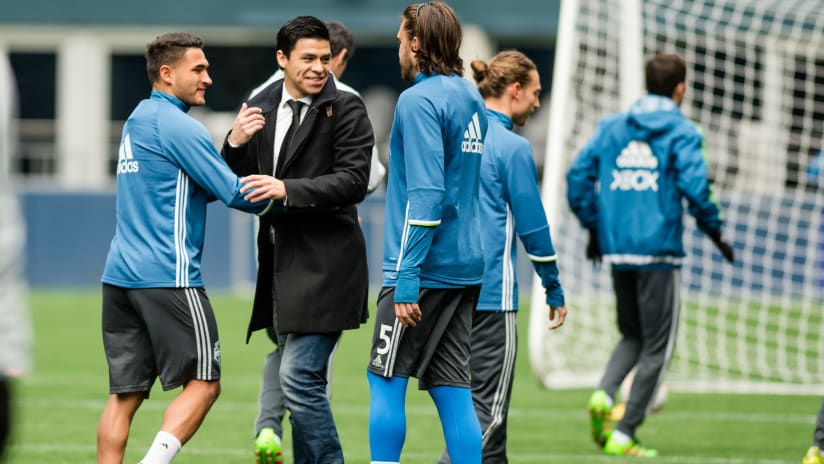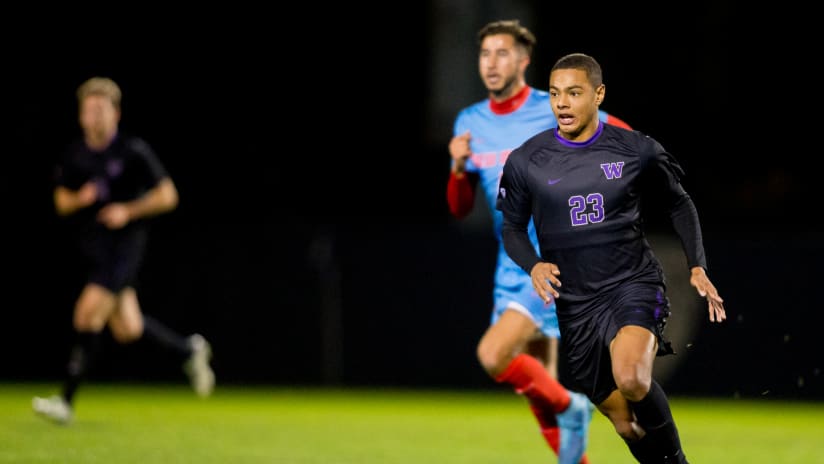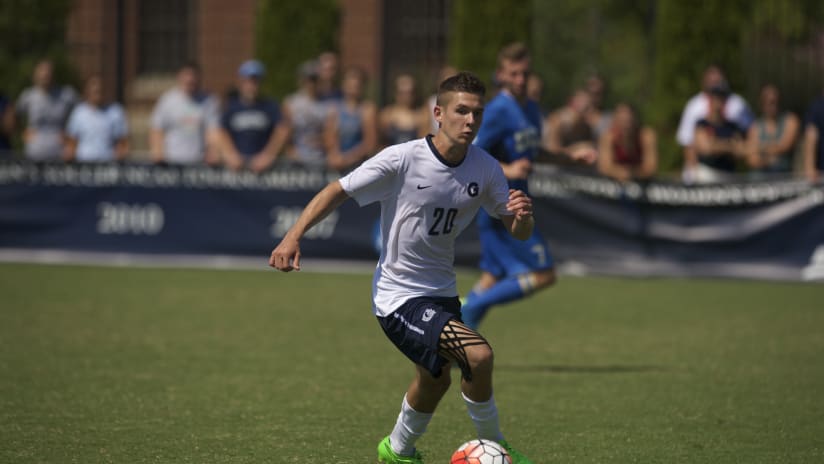Oscar Pareja wants you to chase him.
Not in a literal sense, of course, but in youth development and in pushing young players into the first team and tactically, too. Pareja, FC Dallas’s forward-thinking head coach, has taken pains since arriving back in Frisco in 2014 to craft a lineup that takes MLS’s rampant athleticism and pits it against itself. Among other things, FC Dallas is young and fast and terribly dangerous in open space.
The thing about speed is that it isn’t necessarily coachable and it isn’t always about flat foot races. FC Dallas has so many players who think fast - to say nothing of their out-and-out speed - that they can work possession upfield with its players hardly running much at all.
The Sounders can relate. A 2-0 loss in Frisco against FC Dallas earlier this year bore all those hallmarks. The Sounders dominated possession, chances and just about everything. FC Dallas cashed in on its few chances and that was that.
FC Dallas comes to Seattle for a midweek tilt on Wednesday without history at its back. They haven’t won at CenturyLink Field since 2011, and even on its bad days Seattle’s done well defensively at home. The problem, of course, has been Seattle’s attack. The Sounders are now in the midst of a 271-minute scoreless streak at home, and with the No. 1 team in the Western Conference visiting the shockingly last-place Sounders, a win has never been more paramount.
The story for the Sounders has been largely the same for the past two months. The 4-3-3 has not been producing fruit in the final third, and Seattle coach Sigi Schmid is still trying to work a handful of seemingly incongruous pieces into an attack formation that works consistently. Even when the Sounders do pepper the goal with shots - as they did in a 1-0 loss against the LA Galaxy last weekend - they haven’t finished many of them.
The disparity for the Sounders has never been greater. Nobody attempts more passes per game than the Sounders at 489, but their shot conversion ratio is around eight percent, easily the worst in MLS. A mountain of passes and no summit to crown them.
FC Dallas has been far more judicious with its chances with far fewer possession. They’ve scored 19 goals from open play this season, eight more than Seattle, and their pass success rate is a mere 75 percent, good for 16th in the league. Seattle’s? A soaring 83 percent, the best total in MLS.
What that tells us is that Seattle is remarkably tight with its passing in the middle third but wanton once moving it downfield. It enumerates FC Dallas’ usage of Mauro Diaz, one of the best central creatives in the league, and puts into glaring contrast Seattle’s lack of a similar playmaker. And it shows a lethality around the goal that Seattle has not yet glimpsed this season since the preseason departure of Obafemi Martins.
Spice in the fact that FC Dallas has more road wins (four) than any other team in the Western Conference and Seattle has its work cut out on Wednesday night.
Notably, Clint Dempsey made his triumphant return to the lineup on Saturday against the LA Galaxy after a six-week layoff with the U.S. national team at the Copa America Centenario. And it was never more obvious that Dempsey’s role without a No. 10 is still the most confusing in the current 4-3-3 construct.
At the Copa America, Dempsey operated as the center forward in Klinsmann’s shifting 4-3-3 that ultimately ended up as a globular 4-4-2. Schmid did something similar against the Galaxy, but instead of shifting a Bobby Wood type next to Dempsey, he moved Dempsey back as the creator behind Nelson Valdez and Jordan Morris, who operated as the two strikers. This made a kind of sense, considering neither Valdez or Morris can play deeper and Dempsey is arguably the team’s most dangerous player and unarguably its most versatile in the final third.
But take a look at Dempsey’s touch map from Saturday. Each dot represents a touch.

Dempsey took 83 touches against the Galaxy, and you’ll notice only eight of those were in the box (the only one in the six-yard box was a point blank shot he dinged off the post in the 90th minute). With so many of his touches deep, you’d expect Dempsey to either run at defenders or play in forwards for chances. That’s not Dempsey’s game, and only nine percent of his 83 touches came in the box. Dempsey largely flitted around the area looking for openings and finding few.
The overall deployment is tough, though. Morris has scored almost all of his goals as a center forward blitzing under long balls through the central channel. Valdez, at this point in his career, has turned into a back-to-goal holdup striker whose lack of goals this season is partly down to not having an immediate strike partner. And in the midst of that is Dempsey, the most versatile of the three and the only player really capable of playing in between the lines, even if it takes him out of what he does best.
How do you reconcile those three pillars? Schmid has tried a bit of everything: Morris on the wing, Valdez on the wing, Morris in the middle off Valdez, Dempsey as the center forward, Dempsey as the left winger, Dempsey as the attacking midfielder. Even with players like Oalex Anderson,Herculez Gomez and Aaron Kovar rotating into the lineup, nothing’s stuck.
Schmid will continue tinkering as the season progresses, because it’s the only thing to do. Until reinforcements arrive, Schmid’s only option is to keep stoking the coals, moving pieces and hoping the gears finally click. Because until they do, the Sounders are still outside the playoff picture hoping for a crack of daylight.





